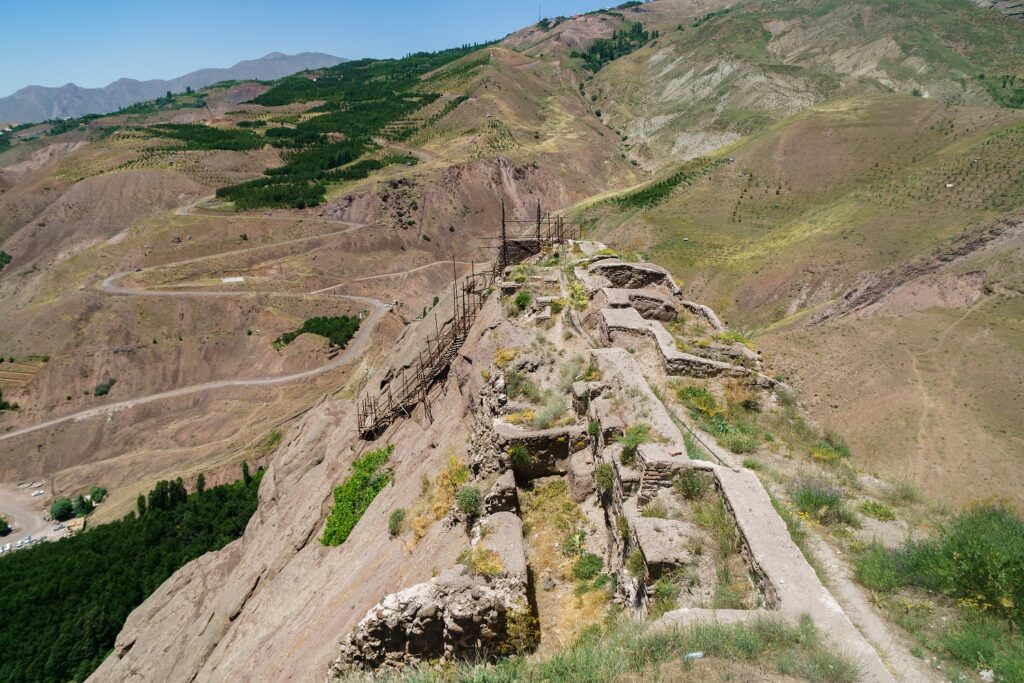Alamut

Museum Houses of Iran
April 7, 2021
Laleh Hotel
May 30, 2021a mythical fortress steeped in history
Alamut is the name of a valley in the Alborz massif south of the Caspian Sea, near the city of Qazvin, 100 kilometers from Tehran. The 11th and 13th century Alamut castle, fortress of the Ismailis, better known under the name of Assassins, dominates this fertile valley of the Rudbar massifs, at an altitude of 1,800 m. A few ruins remain above the village of Gazor Khan.
This chateau is a place with an important history and many things to discover. Made famous above all by Marco Polo’s travel accounts, the Alamut Fortress remains a terrifying legend. The word Alamut would mean “Eagle’s Nest”. The fortress of Alamut then those of the valley were taken from 1090 by the faithful of a scholar from Yemen, Hassan-i Sabbâh, born around 1036.
He was looking for a safe and secluded place to serve as a basis for the news religion he advocated, that of the Nizarites, a Shiite sect resulting from the Ismaili schism of the 8th century and claiming to preserve the foundations of the true Muslim faith.

In his Book of Wonders, first published in 1298, the great Venetian traveler Marco Polo recounts visiting the fortress of Alamut. It had been taken without a fight in 1256 by the Mongolian army of Hulago Khan, which swept over Iran, razed it and set it on fire, destroying the precious astrological instruments and scientific volumes in his library.
His account of Alamut therefore comes from testimonies gathered on the spot and not from direct observation. According to him, the fortress capping this rocky peak which is difficult to access included a magnificent secret garden representing those of paradise.
Count half an hour of walking. If the climb to the ruins of Alamut castle is less arduous today, it is nonetheless difficult. Irregular steps carved out of the rocky outcrop lead to the ruins of the summit, at an altitude of 1,800 m. Formerly, on this very narrow path, the assailants exposed themselves to attacks from the defense. Today, only possible rockfalls and slips in the precipice threaten.
In addition to this fascinating history, you will see the valley extending into the great Alamut mountain range. These yellow-red colors, which contrast with the white of the snow-capped peaks of Mount Elbrus, will leave you speechless.
The natural panorama offered by this region is impressive. Do not forget your camera, you will take home an unforgettable memory!
